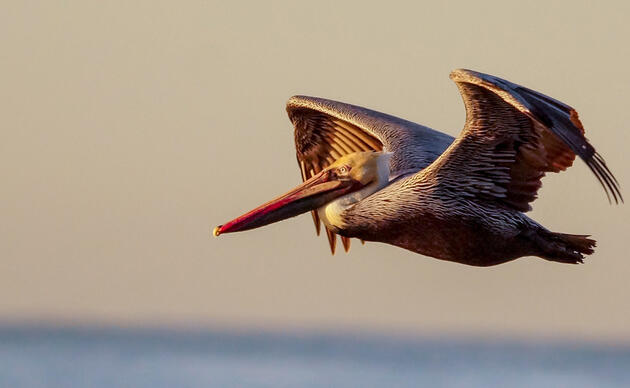This story originally appeared in the Post & Courier Greenville on June 4, 2021.
Tim Lee asked the tour group to stop and listen.
Ears adjusted to the semi-silence until a few distant trills and twitters broke through the whisper of breeze in the trees. Not a peep was made nearby, though, prompting the South Carolina state park interpretive ranger to joke that the birds always seemed to know when someone was listening.
The newest and least natural addition to the scenic wonder of Caesars Head is immune to that apocryphal problem.
Audubon South Carolina, the state parks department, the U.S. Fish and Wildlife Service and Duke Energy teamed up June 4 to unveil a Motus wildlife tracking system at the Upstate park. Motus uses antennas and radio telemetry to detect birds, bats and insects tagged with tiny transmitters, called nanotags. The system is particularly useful at Caesars Head, which hosts thousands of migratory raptors in the fall.
The annual count of hawks, eagles and other birds at the park — visual, manual, and stretching back decades — will get a technological assist. It will also help tie all the data collected into a wider study.
“We’re using this data to inform where and how we’re working to protect birds,” said Justin Stokes, executive director of Audubon South Carolina.
“The data that we’re collecting here at this tower and other towers is feeding into Audubon’s new migratory bird initiative, which is a hemisphere-wide initiative that’s tracking and mapping the pathways that migratory birds are taking.”
It is the fifth such installation in South Carolina and the first in the Upstate. The other four are coastal. The antennas at Caesars Head are difficult to spot — four shiny prongs attached to an existing tower mostly obscured by the visitor center and nearby trees.
Any tagged bird passing within about 15 kilometers — a bit less than 10 miles — of a Motus tower creates a radio ping, providing a better picture of migration patterns of individual birds when combined with data elsewhere.
Motus tracking hardware is more common in the northeast, Great Lakes and mid-Atlantic regions. There is also some coverage along the coast of the Gulf of Mexico.
Duke Energy Foundation paid for the installation of the new antennas.
“We’re committed to investing resources, working alongside you, to ensure generations continue to learn about and enjoy the beauty of the nature around us,” said Mike Callahan, South Carolina president for Duke Energy. “Personally, as the son of two teachers, I’m definitely fascinated by educational opportunities like this.”
Department of Parks, Recreation and Tourism director Duane Parrish emphasized the rise in the number of people visiting the state’s parks, a pandemic-driven trend that dates to May 2020. He said the addition of Motus would continue to expand options for visitors.
“We are grateful for this partnership and look forward to incorporating Motus tower data into existing annual programming and community science projects at Caesars Head State Park,” Parrish said.



